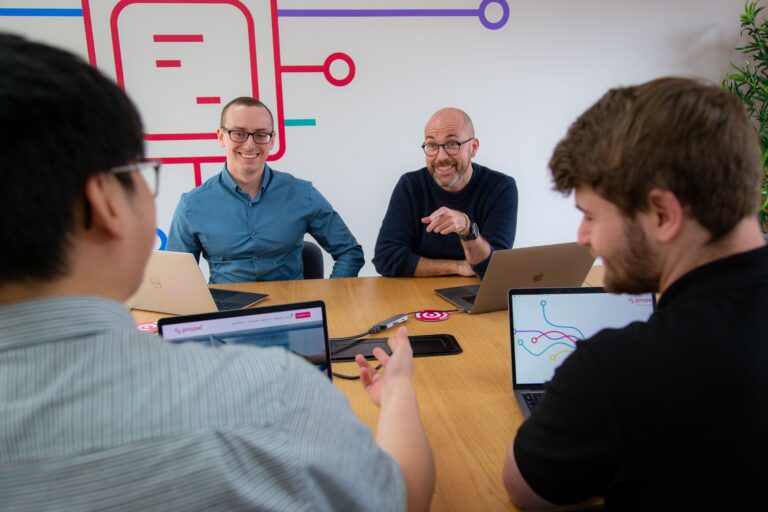There are several types of innovation spanning product, process, business model, organizational, service, marketing, and social innovation amongst others.
The Harvard Business Review describes the key effects of innovation as:
- Incremental: This involves making small improvements to existing products, processes, or services.
- Disruptive: This type of innovation creates a new market and value network, eventually disrupting an existing market and displacing established market-leading companies’, products, or alliances.
- Architectural: This refers to the reconfiguration of an existing product or service by changing its core design and functionality.
- Radical: This type of innovation involves creating entirely new products, services, or processes that have the potential to revolutionize an industry or market.
Understanding the Impact
Different types of innovation have different impacts and implications. It can assist companies in differentiating themselves from competitors, attract customers, increase market share, and establish themselves as industry leaders. It can also enhance customer satisfaction, adaptability to changing market trends and technological advancements, operational efficiency, and cost reduction. Organizations renowned for their forward-thinking culture frequently attract exceptional individuals.
David-Sebastian Stein: Signium Partner Austria, Managing Partner Romania, says, “Thinking has been linear, not only in projects but also in how to run businesses and build organizational structure. Technology and the new generation forces leadership to think circular, looking beyond their own business and being conscious about the entire supply chain from input to output and their stakeholders.”
“This also applies to companies. In the past hierarchical structures had been easy to maintain, nowadays, the leadership style and organizational structure are moving towards agile leadership more and more – identifying strengths and capabilities inside the organization and allocating them towards strategic or operational initiatives. Thus, from a macro perspective, companies need to think circular and from a company perspective, leaders need to apply agile thinking.”
Innovation drives transformation
Overall, leveraging innovation as a competitive advantage requires a proactive approach, a culture of creativity, and a commitment to continuous improvement. By embracing innovation, organizations can position themselves for long-term success in an increasingly competitive marketplace.
An example of how innovation has driven transformation in business is Tesla. Their innovative approach to electric vehicles (EVs) has disrupted the automotive industry. By combining cutting-edge battery technology and sleek designs, Tesla has made EVs more appealing and desirable to consumers. Tesla’s focus on range, performance, and sustainability has pushed other vehicle manufacturers to invest in EV development. This innovation has not only transformed the automotive landscape but also spurred advancements in battery technology and charging infrastructure.
LEGO is a great example of a company that has successfully embraced innovation to remain relevant in the digital age. They have developed augmented reality (AR) sets that combine physical LEGO blocks with virtual elements, creating an enhanced play experience. Additionally, LEGO Ideas is an innovative crowdsourcing platform that allows fans to submit their ideas for new LEGO sets, which engages the community in the product development process.
Innovation has also transformed various sectors including e-commerce, digital payments, cloud computing, sharing economy, artificial intelligence (AI), and renewable energy leading to improved efficiency, customer experiences, sustainability, and new business opportunities helping organizations thrive in a rapidly evolving and competitive landscape.
Stein believes that for businesses to innovate successfully they need to be structured in a more decentralized way. This will enable open change and collective learning, which is vital for embracing all re-shaping and fostering the development of one’s own initiative.
How should C-suite shape culture to innovate?
They should set a clear vision, create an environment of psychological safety, empower and encourage experimentation, promote collaboration, and recognize and reward creativity. By taking this approach, leaders can shape a culture that allows out-the-box thinking to thrive.
Stein adds, “Traditionally, it has been easier to acquire positions of power through politics and communication skills, now with an increasingly decentralized and transparent approach to business, this power is being undermined.”
Transparency is shifting the focus towards competencies and skills as the primary determinants of success, challenging traditional structures. Additionally, the reduced barriers to entry for entrepreneurship and widespread accessibility of knowledge are intensifying competition.
By adopting this approach the C-suite and management can create a safe place that supports and encourages innovation by shaping culture, values, and behaviours that drive creativity, collaboration, and a forward-thinking mindset to ensure their organization’s success.









